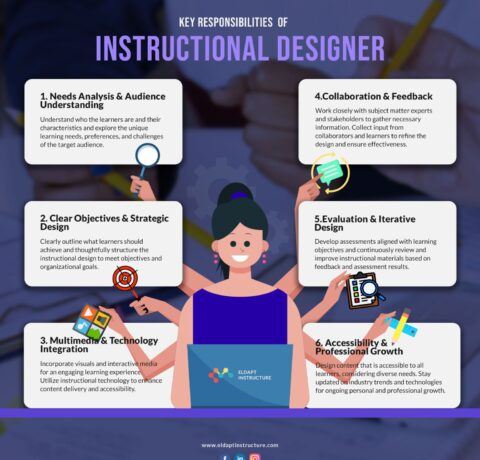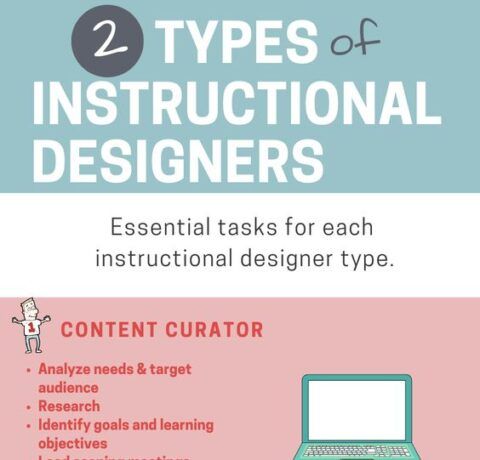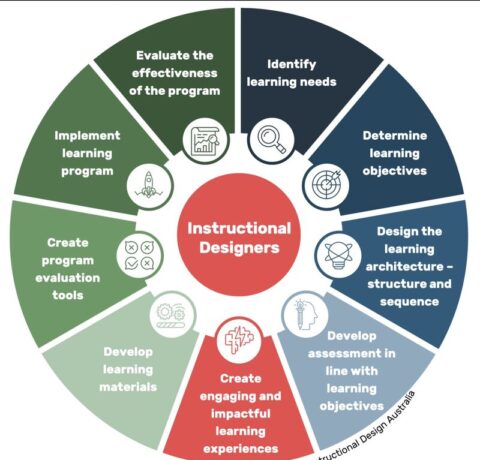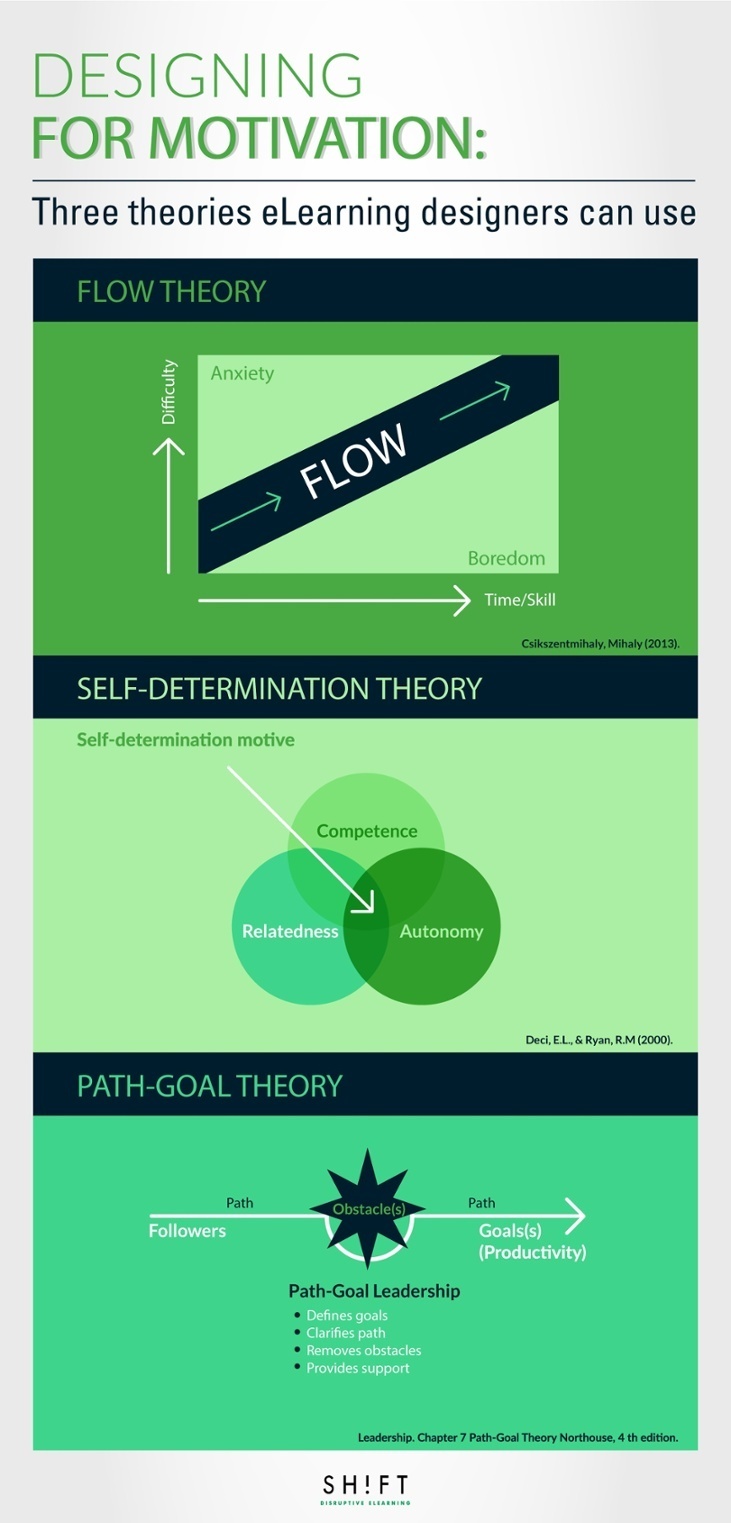Designing eLearning for Motivation Infographic
Simply stated, motivation is what people WANT to do, CHOOSE to do, and COMMIT to do. Motivation is the WHY that makes people do what they do. It is the WHY that makes people choose an object or a goal over another and forego something pleasurable to pursue his object of desire.
As an eLearning designer, you want your learners to be motivated about taking a training program and keep alive the motivation throughout the course.
Motivation is critical to achieve effective learning. Unfortunately, it is hard to achieve if you cannot address the WHY of the learner. To compound matters, adults are notoriously short of motivation. The challenge for eLearning designers is to create and cultivate motivation in learners.
Knowing what drives people to learn is crucial to create high engagement levels in your eLearning courses. Psychologists and scientists have developed three theories to help explain the way the human mind works. As eLearning professionals, we should apply them to create courses that inspire and persuade people to move forward and complete the required tasks.
The Designing eLearning for Motivation Infographic presents the basic tenets of these motivation theories:
1. Flow Theory
Being in the flow is the ultimate manifestation of intrinsic motivation. It is that state of intense focus when you are so absorbed in the work at hand that you forget the passage of time.
In eLearning, being in the flow happens when the learner is fully and voluntarily engaging with the course and can control the pace and flow of the learning according to his/her needs and preferences. Being in a state of flow maximizes the effectiveness of every training activity.
2. Self-Determination Theory
You want focused, willing learners who are driven by some innate urge to take your course. Truth is self-motivated participants absorb and internalize learning much more efficiently than those who approach a training program with skepticism, unwillingness, and apathy.
The Self-Determination Theory focuses on human being’s natural tendencies and psychological needs. Fulfilling these needs facilitates self-growth and promotes well-being. You can apply the tenets of this theory to create courses that appeal to the basic needs of your learners and let them respond according to their innate tendencies.
3. Path-Goal Theory
The Path-Goal Theory is based on the basic human tendency to follow examples set by others. In a learning environment, who better than the trainer or the eLearning designer to BE the motivation that learners will want to learn from?
This theory, developed by psychologist Robert House in 1971 and later refined in 1996, lays down the principles of how leaders spur followers to action. The foundation of it is the belief that learner’s motivation and consequently, his/her performance is heavily influenced by the behavior of the instructor.
The above-mentioned motivation theories peek into the minds of your learners and lay bare their expectations so that you can create eLearning courses with different flavors.







You can adjust your cookie preferences here.